Building a garden dump trailer is an invaluable project for garden enthusiasts, landscapers, and DIY warriors alike. This guide delves into every aspect of constructing a durable and efficient garden dump trailer, focusing on practical steps, materials needed, and design considerations. A well-built garden dump trailer can simplify the process of transporting soil, mulch, debris, and other materials, making garden and landscaping tasks significantly more efficient.
Key Components of a Garden Dump Trailer
Table of Essential Components
| Component | Description |
|---|---|
| Trailer Frame | The structural backbone, usually constructed from steel or aluminum. |
| Axles | The rotating shafts that allow the trailer to roll; can be single or tandem. |
| Wheels | Typically 13” to 16” depending on the load capacity; larger wheels roll easier. |
| Dump Mechanism | The hydraulic or gravity-based system that facilitates tilting the trailer. |
| Bed/Deck | The flat surface of the trailer where the materials are loaded, often made from treated wood or metal. |
| Hitch | The attachment point to connect the trailer to a vehicle, usually a ball coupler or pintle. |

1. Planning Your Garden Dump Trailer
Determine Your Needs
Before diving into construction, it’s crucial to establish what you need the trailer for. Consider the following questions:
- What is the maximum load capacity required? Think about typical materials to be transported.
- What vehicle will be used for towing? The weight and horsepower of your vehicle will influence trailer design.
- How often will you use the trailer? Frequent use demands more robust features and materials.
Design Considerations
Creating a design blueprint is vital. Incorporate dimensions, load capacity, and safety features. A standard garden dump trailer may range from 4 feet by 6 feet up to 8 feet by 12 feet with a load capacity of 1,200 to 3,000 pounds.
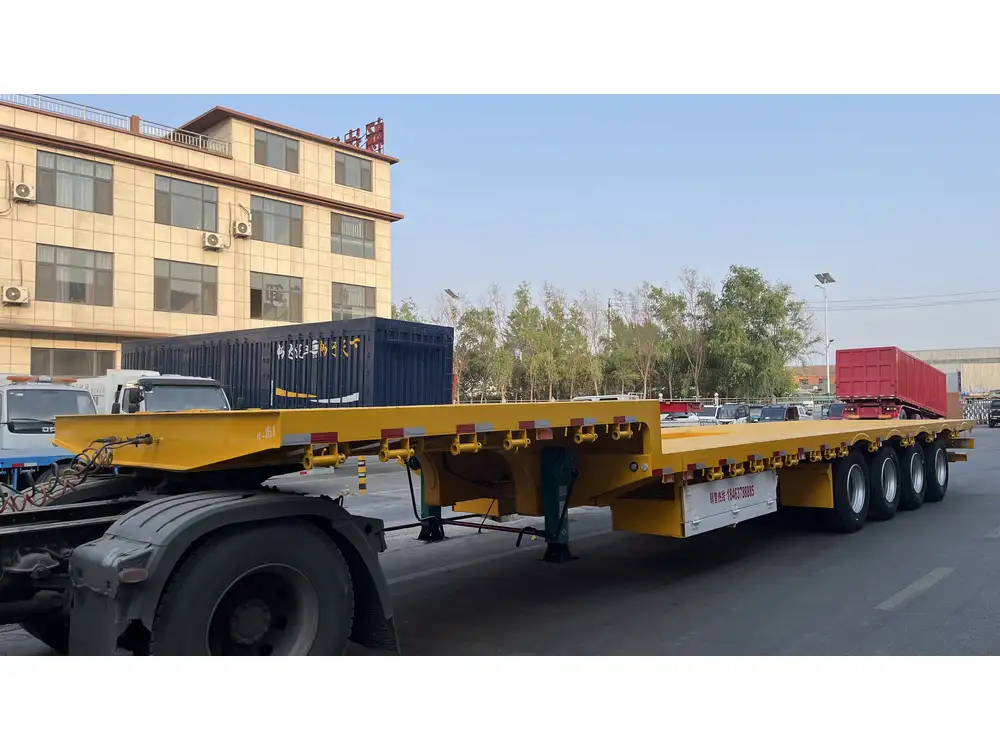
2. Essential Materials and Tools
Required Materials
- Frame Material: High-strength steel or aluminum tubing.
- Axle: Heavy-duty axle rated for your intended load.
- Wheels and Tires: Choose wheels with sufficient load ratings.
- Hydraulic System: A hydraulic cylinder and pump for the dump mechanism, if opting for hydraulic operation.
- Decking: Pressure-treated plywood or steel sheets.
- Hitch: A suitable coupler depending on your towing vehicle type.
Necessary Tools
- Welding Machine: For assembling the metal framework.
- Angle Grinder: To clean and shape materials.
- Drill and Bits: Essential for creating holes for bolts and screws.
- Welder’s Clamp: To hold pieces in place while welding.
- Measuring Tape: Ensures accurate measurements.
- Safety Gear: Gloves, goggles, and a welding helmet.
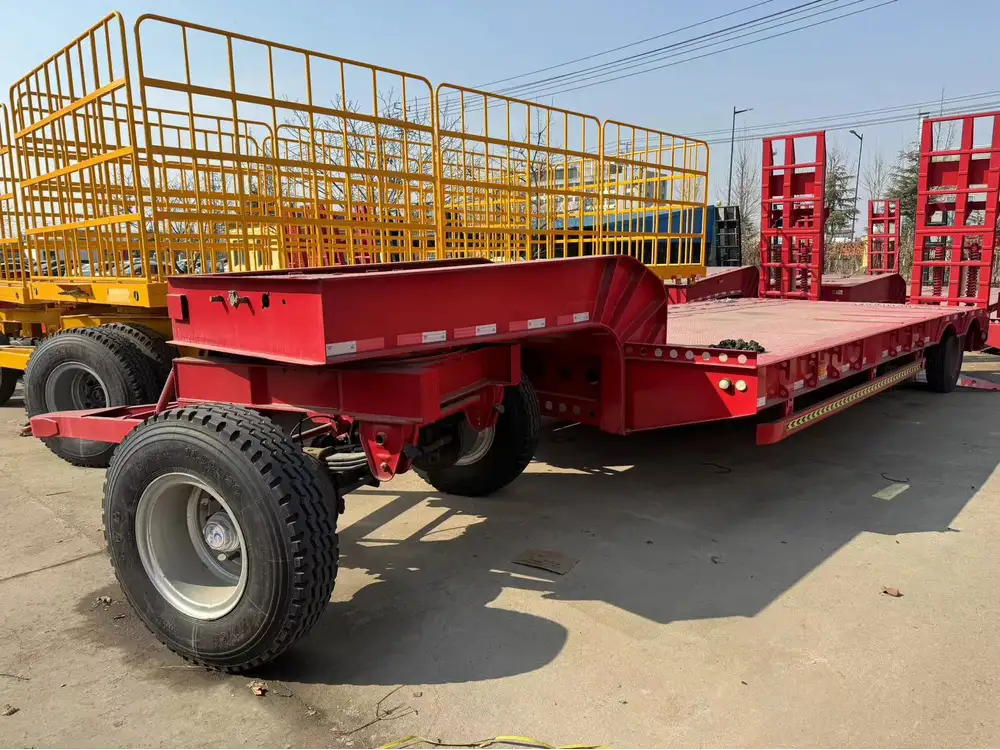
3. Constructing the Frame
Building the Frame
Cut the Metal Tubing: Measure and cut your metal tubing according to your design specifications. Use a cutting torch for precision.
Weld the Frame: Lay out the frame on a flat surface. Weld the corners, ensuring it’s square. Reinforce joints with additional metal plates if necessary.
Install Cross Bracing: For structural integrity, add cross braces within the frame. This minimizes flex and enhances load distribution.
Attaching the Axle
Position the Axle: Center it under the frame. Allow for space to accommodate the wheels and suspension system.
Secure the Axle: Using U-bolts or similar attachments, fasten the axle to the frame. Ensure everything is level to prevent uneven tire wear.
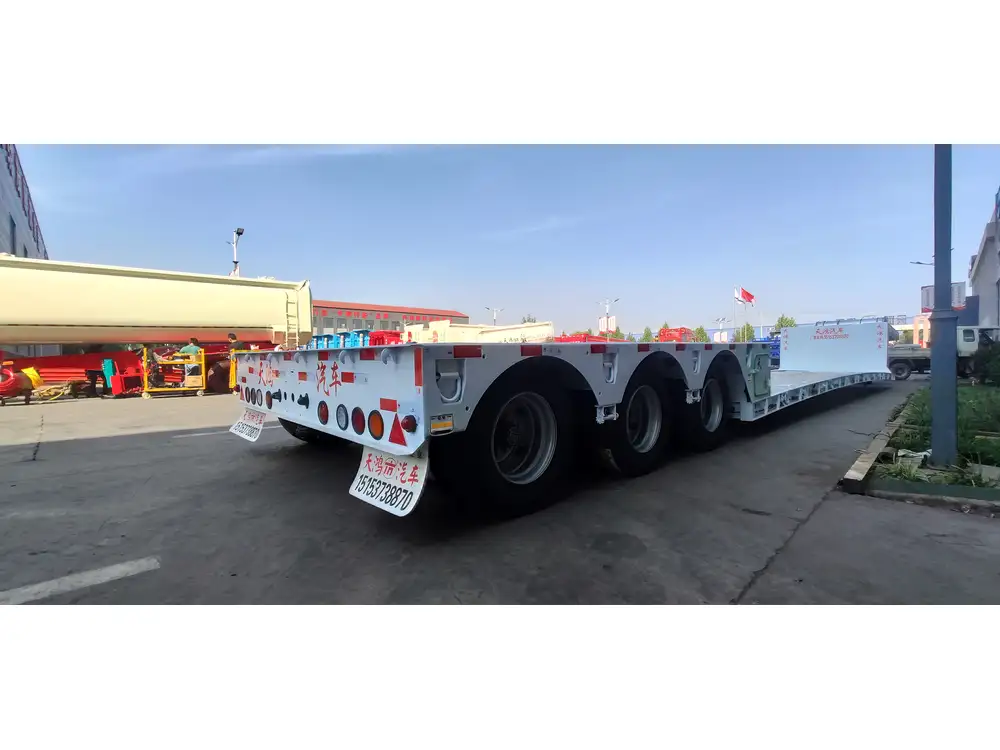
4. Building the Bed/Deck
Deck Construction
Cut the Decking Material to Size: Match the roofing material to the frame dimensions.
Secure the Deck: Attach the wooden or metal decking across the frame using bolts or screws. Ensure it is sturdy enough to handle heavy loads without bending.
Weatherproofing: If using wood, treat it with a weather-resistant sealant to prolong its lifespan and prevent rot.
5. Adding the Dump Mechanism
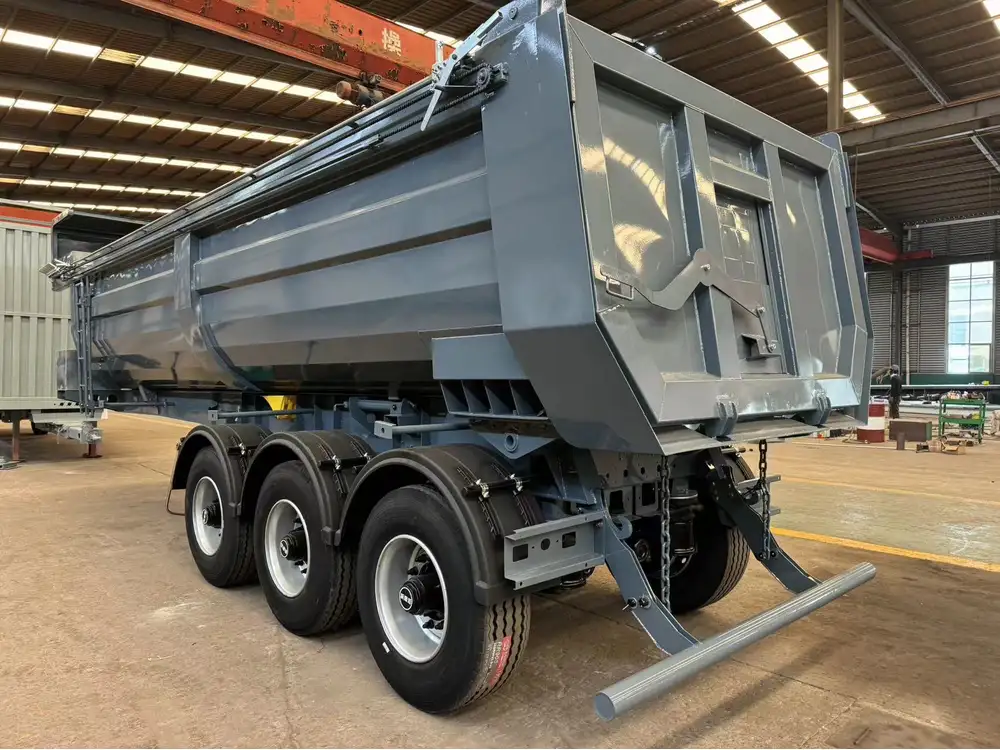
Hydraulic System Installation
Mount the Hydraulic Cylinder: Secure the cylinder to a designated area near the front of the trailer bed.
Connect the Hydraulic Pump: Install the pump in a location that’s easily accessible. This setup generally requires hydraulic hoses that connect the pump to the cylinder.
Test the Mechanism: Before complete use, run a few tests to ensure that the dump mechanism operates smoothly.
Gravity-Operated Mechanism
For a simpler approach, consider incorporating a gravity dump system. This design involves a pivot point at the front of the trailer. When the front is lifted, gravity causes the rear of the trailer to tilt, allowing material to pour out.
6. Hitch and Safety Features
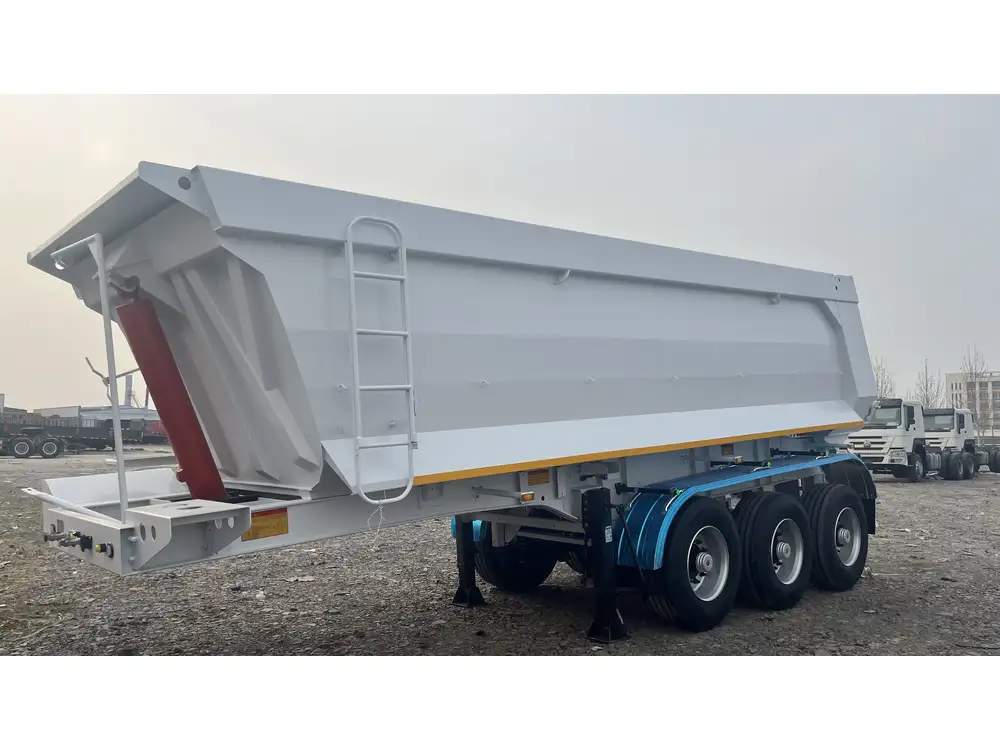
Installing the Hitch
Select the Appropriate Hitch Type: Choose between a ball or pintle hitch that best fits your towing vehicle.
Mount the Hitch: Position the hitch at the appropriate height and secure it with bolts.
Safety Enhancements
Include Safety Chains: Attach chains to the hitch for extra security while towing.
Install Reflective Markers: To improve visibility, especially during nighttime towing.
Weight Distribution: Ensure an even load and proper tongue weight to maintain vehicle stability.
7. Finishing Touches
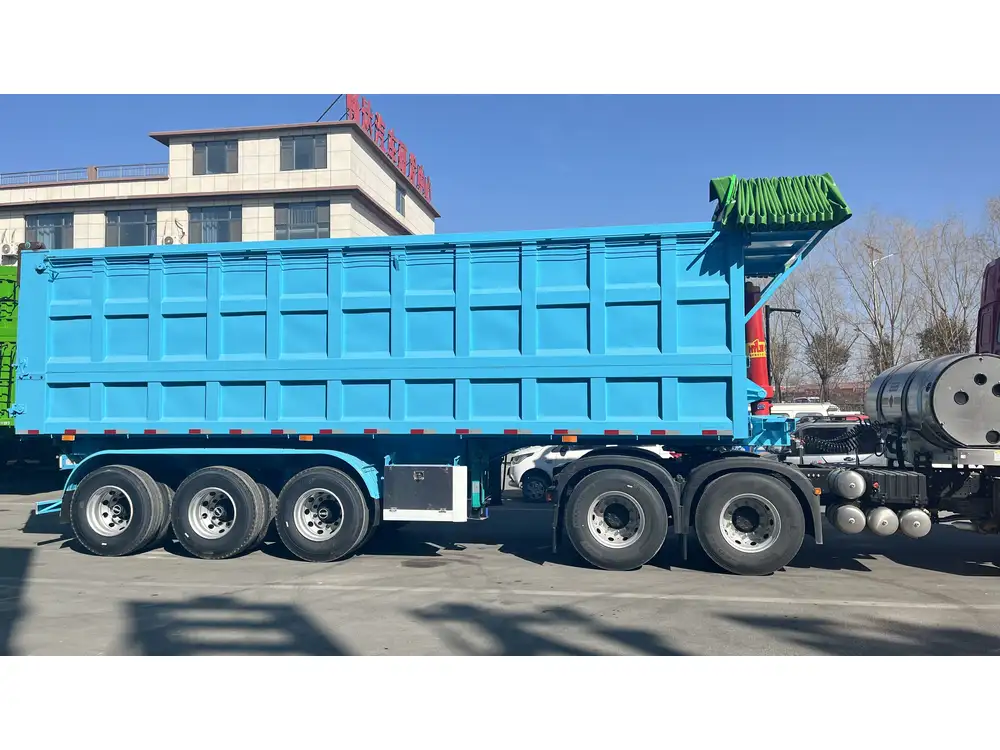
Paint and Protection
Sand and Clean: Prepare all metal surfaces free from rust and debris.
Apply Paint or Anti-Rust Coating: A coat of specialized trailer paint or metal sealant will protect against the elements and extend the trailer’s life.
Additional Features
- Toolbox Storage: Consider adding a toolbox on the trailer for easy access to tools.
- Side Walls: Add removable or fold-down side walls for increased load security while transporting materials.
8. Maintenance Tips for Longevity
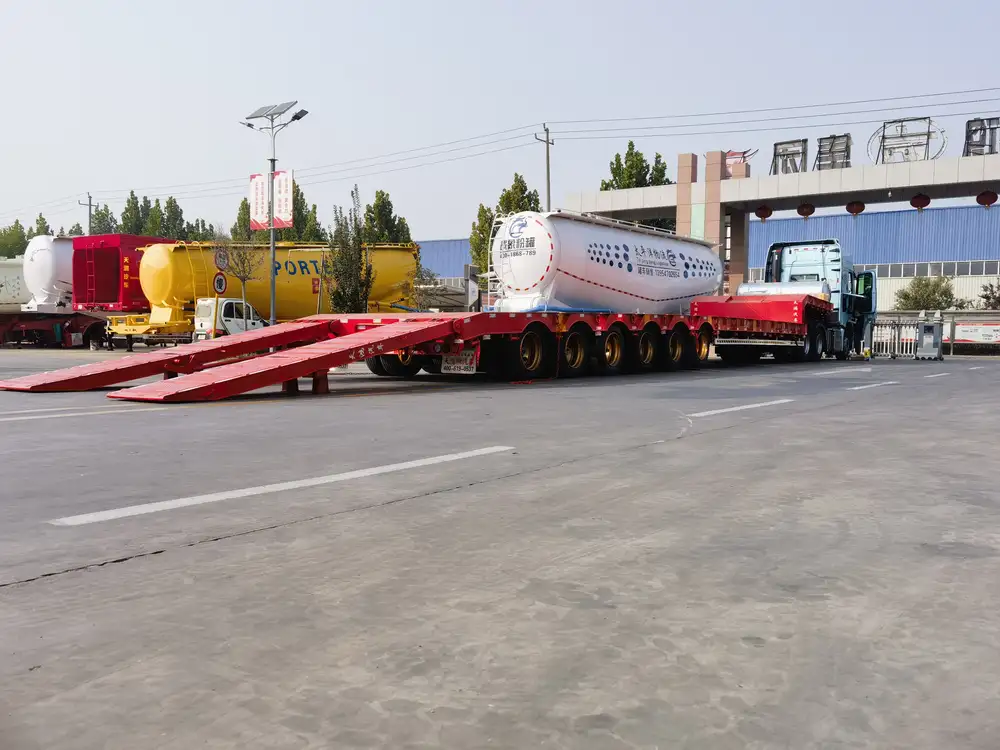
Routine Checks
- Inspect the Tires: Regularly check tire pressure and tread wear.
- Examine the Axle and Wheel Bearings: Ensure that the bearings are well-lubricated to prevent overheating.
- General Frame Inspection: Look for any signs of rust or damage regularly.
9. Troubleshooting Common Issues
Common Problems and Solutions
| Issue | Solution |
|---|---|
| Hydraulic System Not Working | Check fluid levels and hydraulic connections. |
| Uneven Load Distribution | Adjust load placement and check hitch height. |
| Tire Wear Issues | Ensure proper inflation and alignment. |

Conclusion
Constructing a garden dump trailer not only enhances your gardening experience but also serves as a functional tool that alleviates several challenges associated with material transportation. Prioritize safety, utilize quality materials, and ensure a well-thought-out design to maximize the utility and lifespan of your trailer. With this comprehensive guide, we hope you equip yourself with the knowledge needed to successfully build a garden dump trailer that meets your specific needs and enhances your gardening efficiency for years to come.



